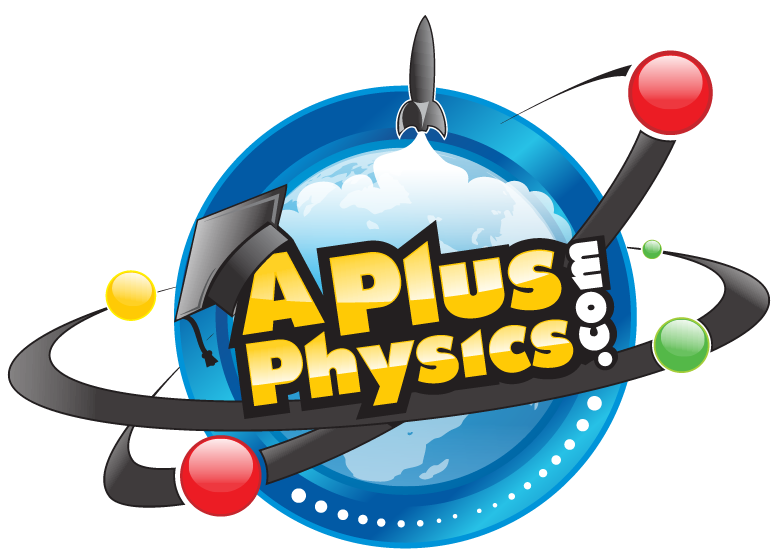Search the Community
Showing results for tags 'Waves'.
-
Name: CYMATICS: Science Vs. Music - Nigel Stanford Category: Sound & Music Date Added: 2016-03-14 Submitter: FizziksGuy Published on Nov 12, 2014 http://NigelStanford.com/Solar_Echoes From the album 'Solar Echoes'. http://NigelStanford.com/Cymatics Download in 4k / HD. All of the science experiments in the video are real. Watch behind the scenes and see how it was made. Facebook: https://www.facebook.com/johnstanford... Twitter: https://twitter.com/nigel_stanford Directed by http://ShahirDaud.com Cinematographer: Timur Civan http://timurcivan.com Category Music License Standard YouTube License CYMATICS: Science Vs. Music - Nigel Stanford
-
Name: Vi Hart: What's Up With Noises Category: Sound & Music Date Added: 2015-09-10 Submitter: FizziksGuy Vi Hart: What's Up With Noises
-
Name: Time Warp: Whip Category: Waves Date Added: 2015-08-11 Submitter: FizziksGuy Time Warp learns about the bull whip and catches the sonic boom. Watch more at http://www.discovery.com/tv-shows/other-shows/videos/other-shows-time-warp-videos/ Time Warp: Whip
-
Name: Polytonic Overtone Singing Category: Waves Date Added: 16 April 2015 - 07:33 AM Submitter: FizziksGuy Short Description: Visual Explanation of Polytonic Overtone Singing Published on Nov 16, 2014 by Anna-Maria Hefele here some more information for those of you that are really interested in what's happening and how it works what I am doing in polyphonic overtone singing (......and, YES, YOU CAN LEARN THAT!!! I wasn't born with the skills of polyphonic overtone singing....) View Video
-
https://medium.com/the-physics-arxiv-blog/first-experimental-demonstration-of-a-trapped-rainbow-using-silicon-795ff204385e "Back in 1947, a pair of physicists demonstrated that when a beam of light reflects off a surface, the point of reflection can shift forward when parts of the beam interfere with each other. 60 years later, another group of physicists discovered that this so-called Goos-Hanchen effect could sometimes be negative so the point of reflection would go back toward the source rather than away from it. They even suggested that if the negative effect could be made big enough, it could cancel out the forward movement of the light. In other words, the light would become trapped at a single location. Now, physicists have demonstrated this effect for the first time using light reflected off a sheet of silica. The trick they've employed is to place a silicon diffraction grating in contact with the silica to make the interference effect large enough to counteract the forward motion of the light. And by using several gratings with different spacings, they've trapped an entire rainbow. The light can be easily released by removing the grating. Until now, it has only been possible to trap light efficiently inside Bose Einstein Condensates at temperatures close to absolute zero. The new technique could be used as a cheap optical buffer or memory, making it an enabling technology for purely optical computing."
-
RAdio Detection And Ranging (RADAR)
pavelow posted a blog entry in Blog Having Nothing to do with Physics
Radar is used by militaries and civilians of the world for object detection. Radar works when a tower shoots a "beam" of radio waves in a direction. If an object is in this "beam" of radio waves, the waves will bounce back to the tower. The owner of the radar tower receives two very important types of data from the use of radar: Distance and velocity. Distance between the radar tower and object is determined by the time it takes the radio waves to return to the tower after they are initially shot. The radio waves travel at light speed. Therefore, it's pretty easy to determine the distance. Take light speed, multiply by the time for the round trip, and you get the distance. there is one twist, however. The total distance must be divided by two because the radio wave made a round trip, going to the object and back. The velocity of the object in the radar beam can be found using the Doppler effect. If the object is moving away from the tower, the frequency of the returning radio waves would drop. The opposite is also true. If the object is moving towards the tower, the frequency of the returning radio waves would go up. The extent to which the radio waves are shifted helps pinpoint the objects velocity. -
Why is There Less Noise During a Heavy Snowfall?
pavelow posted a blog entry in Blog Having Nothing to do with Physics
Is it just me or does it get quieter outside when a couple of inches of snow are falling? Actually, the answer is a combination of both. First of all, during a big snowfall, there are likely to be less people and other noise making devices outside, so there is less initial sound hitting they eardrums, without regard to any effect the snow has on sound waves. What if the amount of noise made is the same before a snowfall and during/after? Sound waves are absorbed by porous and insulating materials. Freshly fallen snow has plenty of air pockets for sound waves to get trapped in. Regularly, sounds bounce off of hard surfaces like the ground before they reach the ear, so when the snow insulates these sounds, the angles from which sounds reach the ear are greatly reduced. The temperature during snowfall compared to a warm clear day is also a factor. Lower temperatures slow down sound waves, and sound waves, like other types of waves, refract when they change speed. During the winter, when the ground is cold, and the air is warmer, like during a clear winter day, sound waves refract down when hitting the lower colder air, making more opportunities for sound reflection. During snowfall, the air is relatively as cold/colder than the ground, causing the opposite effect, leaving less opportunities for sound reflection, and sound get carried into the atmosphere. Enjoy the quiet winter days/nights! -
I was just looking around on the usual places and I found something that some of your students might be interested in. It is using ultrasonic standing waves to levitate objects.
- 1 reply
-
- 1
-

-
- waves
- levitation
-
(and 1 more)
Tagged with:
-

My infatuation with Quantum Physics: a true love story.
PepperJack posted a blog entry in PepperJack's Blog
Throw away everything you have ever learned about classical physics. Forget about everything logic has taught you, and remove any ordinary rules of thought that every sane person uses to make deductions. For some people this may be harder than others, but for me, it's fun. Not like hydrogen bonding is "FON" but like real fun. Mr. Fullerton said, "If you understand Quantum Physics, you must be an idiot, or should have a PhD in physics." Challenge accepted Mr. Fullerton. Quantum Physics is like the rebel of all science's this is why I am so attracted to the idea! Classical physics says, particle are particles, and waves are waves, and never shall they meet. Particles have an energy E and a momentum vector p. Waves, like light waves, have amplitude A and a wave vector k (where the magnitude of k=2?/?, where ? is the wavelength) that points in the direction the wave is traveling. According to classical physics, that's the end of it. However, in reality things are a bit different. There are random laws. The theories of nature are intellectually intolerable and contradicting. The idea of a random, uncontrollable element in the laws of nature did not sit well with classic physicists. This idea of the arrival of a photon was truly an unpredictable event. The final position of a photon is unpredictable. It is impossible to say where the photon is and what direction it's moving in. This fuzziness deals with the Uncertainty Principle. And by Uncertainty, in no way is this made up numbers. Uncertainty is precise, it is a fact and it is known. (Thank you Hindenburg.) It involves probability measurements, integral calculus, and other fancy mathematics. So this uncertainty dealing with probability could be as simple as flipping a coin 1000 times. Now there is a probability of flipping a coin heads 1000 times, but I wouldn't bet my money on that. It is completely random and unpredictable as of now by scientists. This is kind of what Einstein meant when he said "God doesn't play dice." He flips coins. Just kidding! But there has been some controversy over this with Stephen Hawking challenging Einstein's claim, and presenting an idea which could possibly allow scientists to tell the future. The end of time is the next revolution in physics. Scientist are describing time as something that happens when nothing else does. Others believe if nothing happened, if nothing changed, time would stop. Kind of like if a tree fell in a forest with no one there, would anyone hear it? But this new claim in science questions, and proves time doesn't exist. A timeless universe is intensely temporal. This new theme casts doubt on Einstein's greatest contribution, the space-time continuum. The problem? The great chasm between classical and quantum physics. Einstein's general relativity and quantum mechanics may well spell the end of time. This is the mystery of the universe: multiple worlds, time travel, immortality, and the illusion of motion. This is the most fascinating thing I have ever set my eyes upon. This is the Stern-Gerlach experimental apparatus. The result expected for atoms in an l = 1 state (three components) is shown. The angular momentum is l=0 and z component of that angular momentum is 0. These silver atoms spin up or spin down. Because 46 of the silver's 47 electrons are arranged in a symmetrical cloud, they contribute nothing to the orbital angular momentum of the atom. The 47th electron can be in the 5p state, the angular momentum is l=0 and the z component of angular momentum is 0. It could also be in the 5p state when the angular momentum is l=1, which means the z component of its angular momentum can be -1, 0, or 1. There are two possible directions of spin up or down. Electrons contain intrinsic angular momentum giving us angular momentum that interacts with magnetic field. Angular momentum other than orbital angular momentum is just spin. And depending of the spin of that 47th electron in the atom, there are two possible states of the spin up and down. This is similar to the spin of the earth, you can't stop it. And you also cannot stop the electrons from possessing spin. This goes for other subatomic particles that possess spin, such as protons. Another scary, wonderful thing about quantum mechanics is the interacting of two electrons. Identical particles do not retain their individuality in terms of any measurable, observable quality. You lose the individuality of identical particles as soon as you mix them with similar particles! As soon as you let N identical particles interact, you cannot say which exact is one at r1, r2, r3, r4� Particles obviously have some identity problems. I mean they're just a discrete piece of matter, give them a break. Another cool thing about quantum physics is tunneling. A phenomenon where particle can get through regions that their classically forbidden to go. Are we getting this theme of classic, not being so classy to quantum physics? Mainly what I am trying to say is if I ever fall through the floor due to quantum mechanics, you can have my physics books. The police should really keep their eyes out for photons. They can collide into others, split and then rejoin again! They are tricky things. The basic interaction is called a vertex a fork in the road. A particle proceeds along its world line, until it comes to a fork, but then, instead of choosing one road or the other, the particle splits and turns into two particles, one for each branch. A single electron, spontaneously, without any warning suddenly splits into an electron and a photon, each part is somehow less than the original. Scary concepts from quantum physics: -Probability can be in negatives, but it is nonsense to say, getting heads over tails is a minus one-third chance, it just doesn't make sense. -The complex number, imaginary number, i, is abstract math for the square root minus one. -Black holes are black bodies. -1 light-year is really just a year -Even the coldest object radiates some electromagnetic radiation, as long as they are not absolute zero, which scientist have not yet reached. -If a black hole loses energy, it also loses mass. -Noise is just random unstructured information, like white noise on the screen of a defective TV set, which is why the TV keeps coincidentally turning on in Donnie Darko! Scary. -A dumb hole is a drain hole where the velocity of the flow exceed the speed of sound in water, close to the drain -Mr. Fullerton's hair absorbs every color besides red. -It is possible to have a coin land on its side -It is possible to throw a ball against a wall so many times it goes through "It is impossible as I state it, and therefore I must in some respect have stated it wrong." ~Sherlock Holmes- 8 comments
-
- Stern-Gerlach experiment
- probability
- (and 7 more)
-
-
- refraction
- Snells Law
-
(and 3 more)
Tagged with:
-
-
- waves
- Hookes Law
- (and 6 more)
-
-
- waves
- Youngs double slit
-
(and 5 more)
Tagged with:
-
-
- electromagnetic spectrum
- electromagnetic
-
(and 2 more)
Tagged with:
-
-
- refraction
- Snells Law
-
(and 2 more)
Tagged with:
-
-
- reflection
- law of reflection
-
(and 2 more)
Tagged with:
-
-
- standing waves
- Doppler Effect
-
(and 4 more)
Tagged with:
-
Terms of Use
The pages of APlusPhysics.com, Physics in Action podcasts, and other online media at this site are made available as a service to physics students, instructors, and others. Their use is encouraged and is free of charge. Teachers who wish to use materials either in a classroom demonstration format or as part of an interactive activity/lesson are granted permission (and encouraged) to do so. Linking to information on this site is allowed and encouraged, but content from APlusPhysics may not be made available elsewhere on the Internet without the author's written permission.
Copyright Notice
APlusPhysics.com, Silly Beagle Productions and Physics In Action materials are copyright protected and the author restricts their use to online usage through a live internet connection. Any downloading of files to other storage devices (hard drives, web servers, school servers, CDs, etc.) with the exception of Physics In Action podcast episodes is prohibited. The use of images, text and animations in other projects (including non-profit endeavors) is also prohibited. Requests for permission to use such material on other projects may be submitted in writing to info@aplusphysics.com. Licensing of the content of APlusPhysics.com for other uses may be considered in the future.

